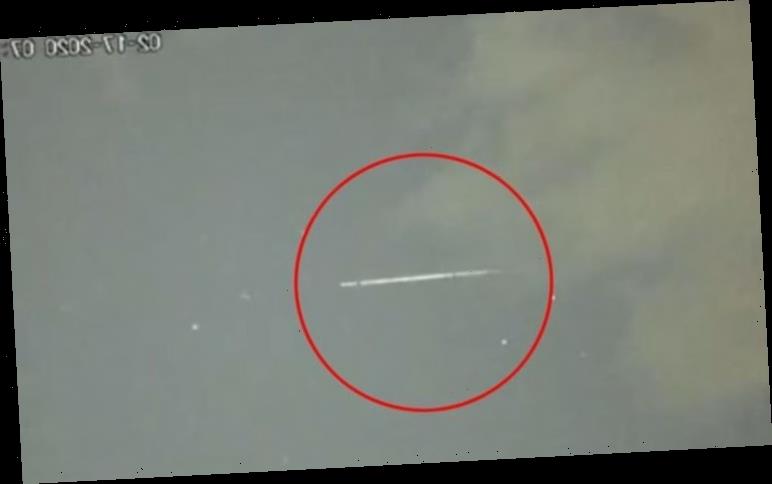SpaceX has ambitious yet controversial plans to launch 12,000 satellites into Earth’s orbit as part of its Starlink project, with the aim being to supply internet to every corner of the globe. The first of the 12,000 satellites were launched in May, 2019, and month by month Elon Musk’s firm has steadily been increasing its numbers in the skies.
Now, there are more than 300 Starlink satellites orbiting the planet, with another launch of 60 planned for tomorrow after two delays.
However, astronomers have been none too pleased about SpaceX’s efforts, stating that they are ruining their view of the night’s sky.
A video released by the Astronomical Society of the Caribbean (Sociedad de Astronomia del Caribe) has shown just how disruptive are, as a satellite can be seen moving through the night, obscuring the view of the cosmos.
The Astronomical Society of the Caribbean said: “A couple of flashes are visible ahead of the main group of satellites, perhaps from parts or a pair of Starlink satellites ahead of the others.”
A recent letter from a group of astronomers condemned SpaceX and its plans to litter the night’s sky with satellites.
The researchers state there are about 9,000 stars visible to the naked eye – but only 172 of them will be brighter than the proposed Starlink constellation.
The team wrote in a paper published on the online journal arXiv: “Depending on their altitude and surface reflectivity, their contribution to the sky brightness is not negligible for professional ground based observations.
“With the huge amount of about 50,000 new artificial satellites for telecommunications planned to be launched in Medium and Low Earth Orbit, the mean density of artificial objects will be of >1 satellite for square sky degree; this will inevitably harm professional astronomical images.
“Serious concerns are common also to other wavelengths eligible for ground based investigation, in particular for radio-astronomy, whose detectors are already saturated by the ubiquitous irradiation of satellites communication from space stations as well as from the ground.
“Without ground based observations most of current space based astronomy would be useless or impossible.
“Astronomers are extremely concerned by the possibility that sky seen from Earth may be blanketed by tens of thousands of satellites, which will greatly outnumber the approximately 9,000 stars that are visible to the unaided human eye.
“This is not some distant threat: it is already happening.”
Last year, SpaceX said it will “listen to concerns” from the astronomy community.
SpaceX president and chief operating officer Gwynne Shotwell said “We want to make sure we do the right thing to make sure little kids can look through their telescope.
Source: Read Full Article



